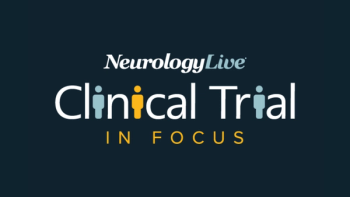
NeuroVoices: Stewart Tepper, MD, on Understanding Newly Approved STS101 for Acute Migraine
Key Takeaways
- STS101, a new DHE nasal powder, offers a user-friendly delivery system for acute migraine treatment, addressing historical challenges in DHE administration.
- Despite not meeting primary endpoints, STS101 showed strong sustained relief in trials, with lower recurrence rates compared to triptans.
The professor of neurology at the Geisel School of Medicine at Dartmouth broke down the clinical utility, supporting data, and practical use cases for STS101, a newly approved nasal powder formulation of dihydroergotamine for acute migraine.
In early May,
STS101’s path was unique, as the drug’s original application was met with a complete response letter for needing additional information on the drug and its manufacturing. It’s submission was based on findings from the phase 1 comparative pharmacokinetic and safety trial (NCT03874832) and the phase 3 ASCEND trial (NCT04406649). Although not required for the application, the results from the phase 3 SUMMIT trial (NCT04406649) were also considered.
To gain greater insights on the potential impact of this new therapy, NeurologyLive® sat down with migraine expert
What should clinicians, including migraine specialists, really understand and know about this new incoming drug, STS101?
Stewart Tepper, MD: Well, STS101 is not a new drug—it’s a new formulation of an established, FDA-approved treatment, dihydroergotamine (DHE). DHE has been around since the late 1940s, so headache specialists and neurologists are very familiar with it. The challenge over the years has been the formulation and delivery system—not the compound itself. DHE needed a user-friendly, accessible way to be administered, and that’s where STS101 comes in.
DHE is an ergot derivative, derived from the bread mold Claviceps purpurea. It binds to multiple receptors and is useful for migraine treatment because it can be used late in an attack, even when central sensitization and allodynia have already occurred. Unlike many acute migraine treatments, DHE tends to offer a complete response. Once a patient becomes pain-free with DHE, the likelihood of headache recurrence drops, and they tend to remain pain-free. That makes it particularly effective for morning migraines, when patients wake with an intense headache and need quick relief, or for menstrual migraines that often last longer. DHE is also effective for terminating status migrainosus and has been used in infusion settings since the 1980s for medication overuse headache.
There were only two non-injectable formulations of DHE prior to this: Migranal, a liquid nasal spray approved in the mid-1990s, and Trudhesa, which delivers the same compound using an HFA propellant to push the drug higher up the nasal cavity. Now we have two new options: STS101, a dry powder nasal DHE in a small insufflator bulb, and a new DHE autoinjector. STS101 is more discreet than Trudhesa and doesn’t require complex preparation. These should both help expand the use of DHE in practice.
What kind of data supported STS101’s approval?
STS101 was studied in several Phase 3 trials. The FDA-set primary endpoints—pain freedom and most bothersome symptom freedom at 2 hours—were not met. However, most of the secondary endpoints were positive. What these studies confirmed was that DHE behaves as expected: a bit slower than triptans or gepants, but with stronger sustained relief.
There’s a famous analogy comparing DHE to sumatriptan: the tortoise and the hare. At 2 hours, the hare—sumatriptan—wins. At 24 hours, the tortoise—DHE—takes over. That’s what the STS101 trials showed. The drug kicks in more slowly, but when it does, recurrence is lower, and patients stay pain-free longer.
The FDA allowed STS101 to use existing efficacy data from Migranal. Safety and tolerability data came from the ASCEND trial, a large longitudinal study. Trudhesa was approved in a similar way, using older efficacy data and newer safety data. STS101 was granted approval through the same streamlined route.
With several therapies coming to market this year, what considerations should headache specialists take?
It’s good news, right? It’s always better to have more tools in the toolbox than not. I’m currently at the American Headache Society Annual Scientific Meeting in Minneapolis, and a lot of new information is going to be presented. We’ve had four migraine therapeutics approved since January. One of them is novel—that's CT-132, a digital therapeutic unlike anything we’ve had before. The company is going to demonstrate it at the meeting, showing how it works as an app for patients. I haven’t seen it in action yet, so I’m going to take a look. It’s meant to be added to conventional preventive treatments, whether migraine-specific ones like anti-CGRP therapies, or older nonspecific treatments like tricyclics, beta blockers, antiepileptics, or SNRIs.
The other three approvals are reboots of known drugs—some with new formulations. First is a combination of rizatriptan with a new formulation of meloxicam, called MoSEIC meloxicam, which releases meloxicam much more rapidly. Normally, generic meloxicam takes hours to act, but this version works in under an hour. The combination, marketed as Zumbrava, showed in a factorial study that its whole is greater than the sum of its parts. It could be useful for patients with partial responses to triptans or NSAIDs. Plus, adverse events were remarkably low.
The second approval is STS101. As I said, it gives us a convenient way to deliver DHE, without having to prep Migranal or Trudhesa systems. The brand name for STS101 is Atzumi.
The third approval is for the DHE autoinjector—something we’ve wanted for a long time. It makes it easier for patients to use DHE at home. Injectable DHE generally works better than nasal forms. That device, branded as Brekiya, isn’t yet available, but presumably it will be later this year. Same with STS101/Atzumi and CT-132—we don’t know exactly when they’ll be commercially available.
So, we’ve had four approvals, but the only one available for prescription right now is the MoSEIC meloxicam–rizatriptan combo tablet.
What excites you from this year’s AHS Annual Meeting?
There are two trials I’m particularly interested in. One is the Resolution trial. We’ve had an approach to medication overuse headache—MOH—that often involves instructing patients to taper off overused acute meds while starting preventive treatments. That’s hard on patients, especially with older preventives that take time to titrate. Last year, we saw the first prospective, placebo-controlled trial using a monoclonal antibody—erenumab—for MOH, and it showed great results without requiring a medication wean.
The Resolution trial compares brief patient education plus IV eptinezumab to brief education plus IV placebo. If it shows similar results, we may have a second confirmatory study suggesting that a wean isn’t necessary—you can just start anti-CGRP therapy, and patients convert out of MOH naturally. That would be a huge step forward.
The other study I’m eager to see is a prospective, placebo-controlled trial on rimegepant in patients who have failed at least two triptans. Many payers require triptan failure before covering a gepant, so this trial will be important for showing whether rimegepant is effective even in that population. Retrospective analyses already suggest similar outcomes across groups—triptan-naïve, partial responders, or those currently using triptans—but this prospective data will help confirm that.
Transcript edited for clarity.
Newsletter
Keep your finger on the pulse of neurology—subscribe to NeurologyLive for expert interviews, new data, and breakthrough treatment updates.




































